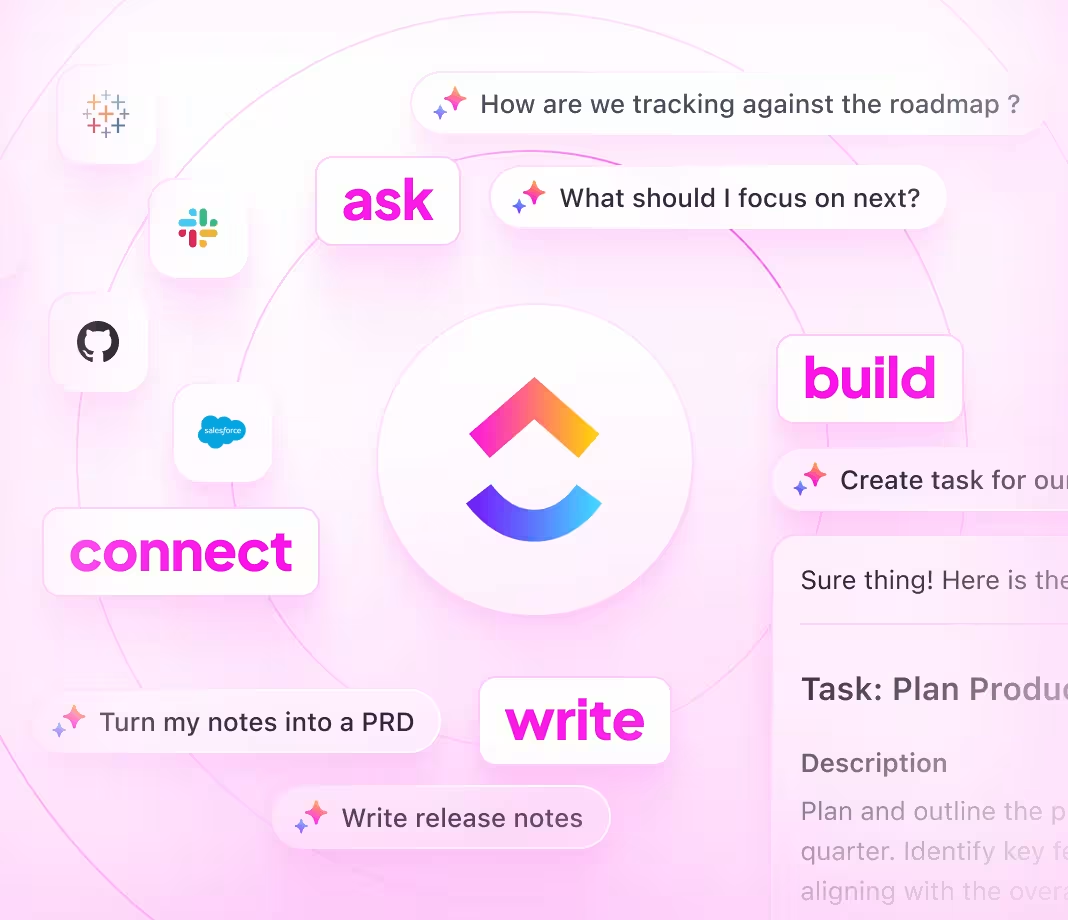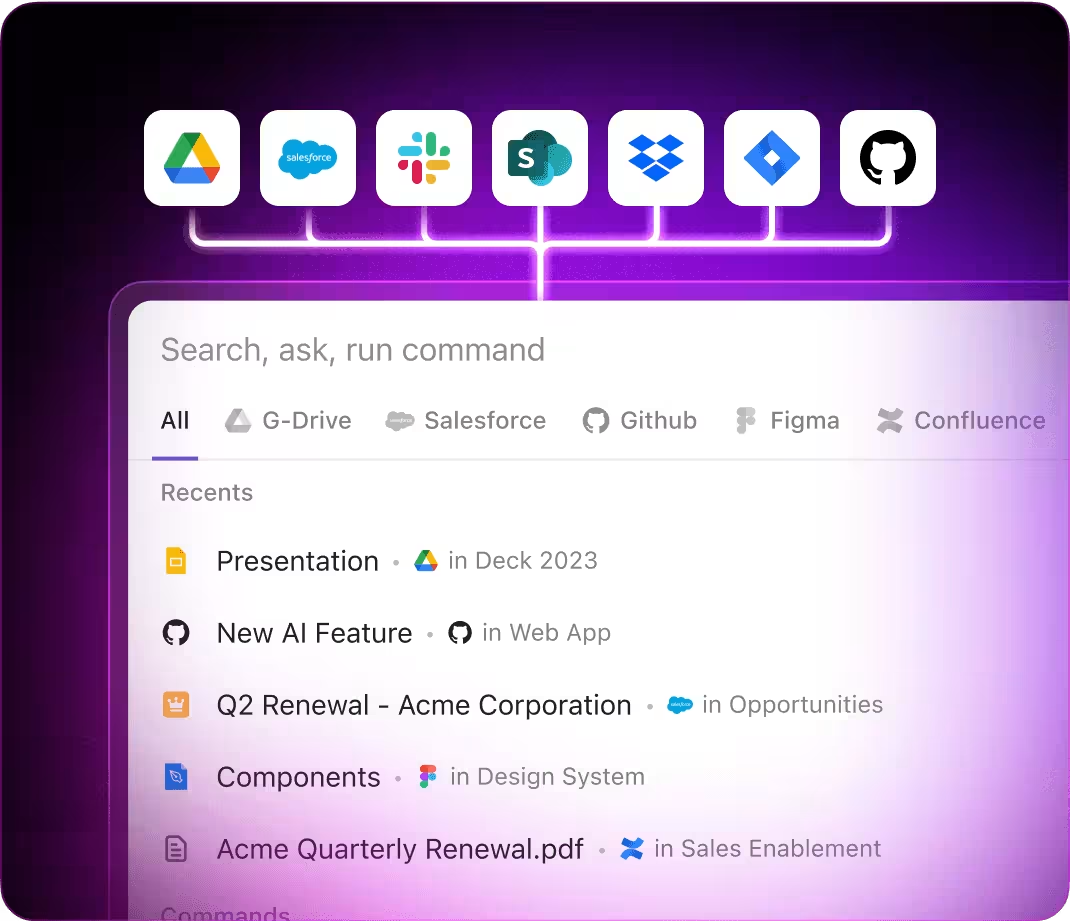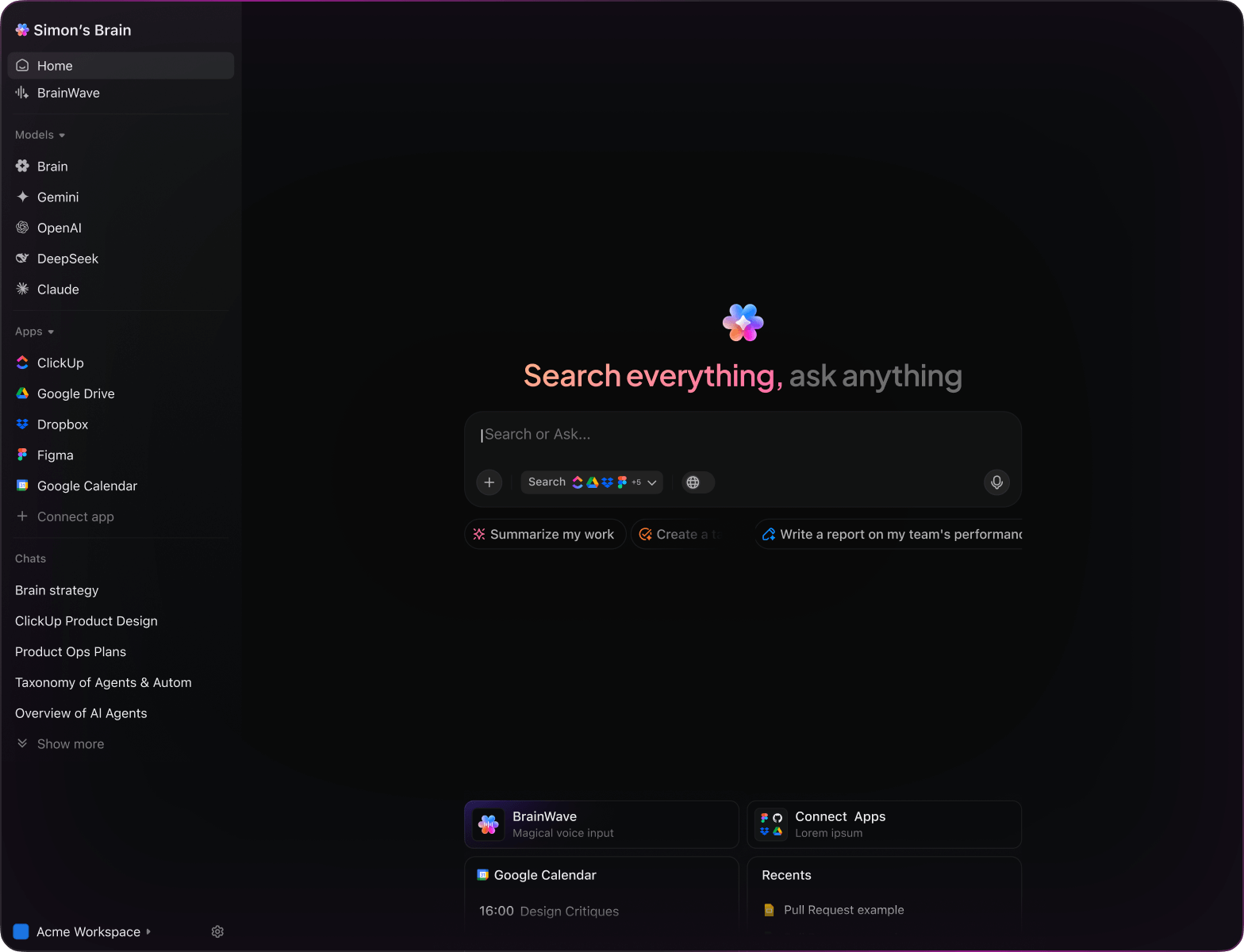AI Technical Specifications
Top AI Prompts for Technical Specs
Draft precise specs, optimize collaboration, and elevate your engineering projects with ClickUp AI.

Trusted by the world’s leading businesses
AI in Technical Specifications
Revolutionizing Technical Specs Creation with AI Prompts
Crafting precise technical specifications is more than just documentation—it's the backbone of successful product development.
From initial requirement gathering to detailed system architecture, interface definitions, and validation protocols, producing technical specs demands coordination across teams and meticulous attention to detail. AI prompts are now a vital part of this process.
Teams rely on AI to:
- Quickly identify relevant standards and best practices
- Generate initial draft specifications and interface descriptions from brief inputs
- Extract key points from lengthy technical documents
- Transform scattered notes into clear outlines, requirement lists, or actionable tasks
Integrated into familiar tools like documents, whiteboards, and project trackers, AI in ClickUp Brain goes beyond simple assistance. It seamlessly converts your technical ideas into structured, executable plans.
Comparing ClickUp Brain with Conventional AI
Why ClickUp Brain Stands Apart
ClickUp Brain integrates seamlessly with your workflow, understanding your context so you focus on creating, not clarifying.
Conventional AI Solutions
- Constantly switching apps to collect information
- Repeating your objectives in each query
- Receiving generic, irrelevant replies
- Hunting through multiple platforms for a single document
- Interacting with AI that lacks initiative
- Manually toggling between different AI models
- Merely a browser add-on without deep integration
ClickUp Brain
- Instantly accesses your projects, specs, and team inputs
- Retains your past work and project aims
- Provides detailed, context-aware guidance
- Searches all your resources in one place
- Supports voice commands with Talk to Text
- Automatically selects the optimal AI model: GPT, Claude, Gemini
- Dedicated Mac & Windows apps designed for efficiency
Technical Specification Prompts
15 Essential AI Prompts for Technical Specifications
Accelerate your specs creation—analysis, validation, and documentation simplified.

Identify 5 innovative approaches for thermal system design in compact electric vehicles, based on the ‘Thermal Systems 2025’ document.
ClickUp Brain Behavior: Analyzes linked documentation to extract key design strategies and propose novel concepts.

What are the prevailing standards for battery pack layouts in sub-30K EVs across Europe?
ClickUp Brain Behavior: Aggregates insights from internal technical reports; Brain Max can supplement with relevant external data if accessible.

Draft a technical specification outline for an adaptive suspension system referencing ‘Suspension Concepts #12’ and prior engineering notes.
ClickUp Brain Behavior: Gathers pertinent details from linked files to construct a structured and detailed spec document.

Compare chassis rigidity metrics between Model 3 and Nissan Leaf using data from the ‘Chassis Q3’ report.
ClickUp Brain Behavior: Extracts quantitative and qualitative data from internal sources to deliver a concise comparative summary.

List primary materials used in lightweight frame construction for EVs, citing R&D documentation and supplier specifications.
ClickUp Brain Behavior: Reviews internal documents to identify commonly used materials and their performance characteristics.

From the ‘Brake System Testing’ file, generate a detailed checklist for component validation following DVP&R standards.
ClickUp Brain Behavior: Detects testing parameters and formats them into an actionable checklist within a task or document.

Summarize 3 emerging sensor integration trends in vehicle safety systems from post-2023 research and technical reviews.
ClickUp Brain Behavior: Extracts recurring themes and insights from linked research documents and technical notes.

From the ‘Driver Interface Survey Q2’ document, outline key user preferences for dashboard control layouts.
ClickUp Brain Behavior: Analyzes survey data to highlight consistent design priorities and feedback trends.

Compose concise and engaging interface text for the energy-saving mode toggle, aligned with the tone guidelines in ‘TechTone.pdf’.
ClickUp Brain Behavior: References tone and style guides to generate varied copy options for UI elements.

Summarize critical updates in North American 2026 pedestrian safety regulations and their implications for front-end design.
ClickUp Brain Behavior: Reviews compliance documents and synthesizes key changes affecting design requirements.

Develop placement and sizing standards for dashboard warning indicators, referencing region-specific compliance files in our workspace.
ClickUp Brain Behavior: Extracts regulatory measurements and positioning guidelines to create a compliance checklist.

Create a comprehensive crash-test protocol based on US NCAP 2026 standards and our vehicle frame design archives.
ClickUp Brain Behavior: Parses PDF content and internal design files to generate grouped testing tasks by impact zone and severity.

Contrast sustainable interior materials like bio-composites across BMW, Audi, and Mercedes using our competitive analysis documents.
ClickUp Brain Behavior: Summarizes comparative data into a clear and accessible format such as tables or briefs.

Identify recent trends in autonomous vehicle sensor arrays and control systems since 2023 from internal research and whitepapers.
ClickUp Brain Behavior: Synthesizes findings from technical notes, concept documents, and uploaded studies.

Highlight main usability challenges in cabin control systems from Southeast Asia EV user feedback folders (materials, ergonomics, interface).
ClickUp Brain Behavior: Extracts and ranks user-reported issues from surveys, feedback notes, and tagged support tickets.
Build Technical Specs Efficiently with ClickUp Brain
Cut down revisions, unify your team, and produce precise documents using AI-enhanced workflows.






AI Prompts for Technical Specs Using ClickUp Brain
Discover How ClickUp Brain Enhances Technical Specification Workflows
ChatGPT Technical Spec Prompts
- Outline a 5-point technical summary from these prototype schematics focusing on performance metrics.
- Compose product documentation for a new industrial sensor emphasizing precision, durability, and compliance.
- Suggest 3 alternative circuit board layouts for a compact device highlighting thermal management benefits.
- Draft a stepwise integration plan for IoT connectivity in a smart appliance prototype.
- Analyze last 3 device firmware updates and summarize key user-requested enhancements for next release.
Gemini Technical Spec Prompts
- Propose 3 innovative interface designs for a control panel based on operator feedback.
- List cutting-edge materials for chassis construction prioritizing weight reduction and strength.
- Create a conceptual mood board for a next-gen wearable device emphasizing ergonomics and aesthetics.
- Recommend seating configurations for a modular workstation ranked by accessibility and comfort.
- Develop a comparison chart for three industrial motors focusing on efficiency, noise, and lifespan.
Perplexity Technical Spec Prompts
- Identify 5 sustainable materials suitable for electronic housings and evaluate manufacturing feasibility.
- Compare battery chemistries for portable medical devices highlighting cost, capacity, and safety.
- Summarize global trends in human-machine interfaces and adoption rates in manufacturing.
- List 5 innovative cable management solutions for server racks ranked by ease of installation.
- Review past prototype failures and extract top 3 lessons to improve future designs.
ClickUp Brain Technical Spec Prompts
- Transform this engineering review thread into clear, prioritized development tasks.
- Condense technical meeting minutes and assign follow-up actions with deadlines.
- Evaluate annotated blueprints and generate a checklist for quality assurance reviews.
- Compile a task list from cross-department discussions on control system upgrades, including urgency levels.
- Summarize user testing feedback on device firmware and create actionable bug fixes and feature requests in ClickUp.
Why ClickUp Works
Transform Initial Thoughts into Detailed Specs
- Convert scattered notes into polished technical documents swiftly.
- Generate innovative solutions by referencing previous project data.
- Build adaptable templates to accelerate specification drafting.
Brain Max Boost: Quickly access historical specs, team comments, and related assets to fuel your next technical outline.

How ClickUp Supports You
Accelerate Specs from Design to Development
- Simplify detailed design talks into straightforward tasks.
- Transform technical notes into actionable assignments effortlessly.
- Automatically create comprehensive handoff documents without extra effort.
Brain Max Boost: Instantly access historical build info, component analyses, or CAD choices across all projects.

AI Advantages
Elevate Each Phase of Technical Specification Creation
Leverage AI prompts to accelerate drafting and enhance precision in your specs.
Instantly Draft Detailed Specs
Engineers outline complex requirements swiftly, enabling clearer communication and reducing guesswork.
Enhance Specification Accuracy
Refine details to minimize errors, ensuring compliance and meeting stakeholder expectations effectively.
Identify Issues Early in Development
Spot inconsistencies and gaps before they escalate, saving time and avoiding costly revisions later.
Align Cross-Functional Teams Effortlessly
Facilitates transparent collaboration, keeping product managers, engineers, and QA synchronized throughout.
Drive Innovation in Technical Documentation
Encourages creative problem-solving and incorporation of cutting-edge standards in your specs.
Integrated AI Support Within ClickUp
Transforms AI-generated insights into actionable tasks, advancing your projects seamlessly.
Speed Up Your Tech Specs Creation
Minimize mistakes, simplify collaboration, and generate precise documents using AI support.





